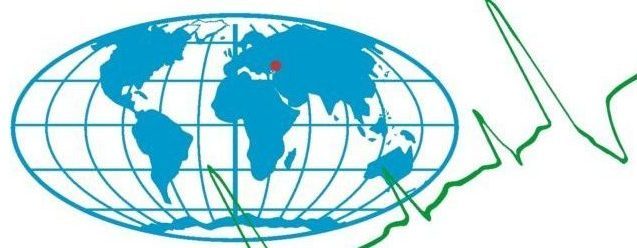V.A. Gaisky
Institute of Natural and Technical Systems, RF, Sevastopol, Lenin St., 28
E-mail: gaysky@inbox.ru
DOI: 10.33075/2220-5861-2022-4-40-45
UDC 556.082
Abstract:
In well-known methods, the device immersion depth in the sea is determined by the measured hydrostatic pressure and, at the same time, the dependence of depth on pressure obtained for a certain “standard” static ocean (sea) with an average salinity and temperature is used.
For regional waters, amendments are introduced if they are known. Such a solution does not guarantee the claimed errors in determining the depth above 10-3, since the real object is non-stationary in time and space.
The accuracy of determining the depth of the probe in real environment and in real time can be increased if during sounding the local density is measured simultaneously with the measurement of hydrostatic pressure.
In this case, the depth of the probe will be equal to the sum of the distances traveled by the probe from one pressure value to another and equal to the pressure increment divided by the product of the average local density and the acceleration of gravity.
Changing the device immersion depth when moving down or up and being on the foot is controlled. The method can be used to control the immersion depth when the underwater vehicle or towed device is moving.
A feature of the method is the averaging of the result over many readings with the suppression of random components of instrumental errors and random noise caused by the vertical movement of the medium.
Due to this, it is possible to obtain the resulting guaranteed accuracy of determining the immersion depth of the order of 10-4.
Keywords: immersion depth, hydrostatic pressure, local density.
To quote:
REFERENCES
- Levashov D.E. Tekhnika ekspedicionnyh issledovanij: instrumental’nye metody i tekhnicheskie sredstva ocenki promyslovo-znachimyh faktorov sredy (Expeditionary Research Technique: Instrumental Methods and Technical Means for Evaluating Commercially Significant Environmental Factors). M.: Publishing House of VNIRO, 2003, 400 p.
- Paramonov A.N., Kushnir V.M., Zaikin V.M. Avtomatizaciya gidrofizicheskogo eksperimenta (Automation of hydrophysical experiment). L.: Gidrometeoizdat, 1982. 224 p.
- Polosin A.S. Vychislenie skorosti zvuka v morskoj vode (Calculation of the speed of sound in sea water). Vestn. Moscow University. Ser. 5. Geography, 1967, No. 3, pp. 101–104.
- Saunders P.M. Practical conversion of pressure to depth // J. Phys. Oceanogr. 1981, 11, P. 573–574.
- Saunders P.M., Fofonoff N.P. Conversion of pressure to depth in the ocean // Deep-Sea Res. 1976, 23, P. 109–111.
- Taroyan G.I., Voronova M.S. Opredelenie glubin pogruzheniya okeanograficheskoj apparatury po gidrostaticheskomu davleniyu (Determination of the depths of immersion of oceanographic equipment by hydrostatic pressure). Notes on Hydrography, 1968, No. 1, pp. 95–98.
- Fedorov I.I. O pereschete glubiny v davlenie pri opredelenii skorostizvuka v morskoj vode (On the conversion of depth into pressure when determining the speed of sound in sea water). Okeanologiya, 1970, Vol. 10. No. 1, pp. 176–180.
- Paramonov A.N., Kushnir V.M., Zaburdaev V.I. Sovremennye metody i sredstva izmereniya gidrofizicheskih parametrov okeana (Modern methods and means of measuring the hydrophysical parameters of the ocean). Kiev: Nauk. dumka, 1979, 248 p.
- Millero E.J., Chetirkin P.V. The density of Caspian Sea waters // Deep-Sea Res. 1980. 27A. P. 265–271.
- Fofonoff N.P., Millard R.C. Algorithms for the computation of fundamental properties of seawater // UNESCO technical papers in marine science. 1983. N 44. 53 p.
- Zaburdaev V.I., Gaisky P.V. Prakticheskie formuly vzaimosvyazi davleniya i glubiny v CHernom more (Practical formulas for the relationship between pressure and depth in the Black Sea). MGJ, No. 6, 2002, pp. 36–43.
- IOC, SCOR and IAPSO, 2010. The international thermodynamic equation of seawater 2010: Calculation and use of thermodynamic properties. International Oceanographic Commission, Manuals and Guides. No. 56. UNESCO (English). 196 p. (Available from http://www.TEOS-10.org).
- Gaisky V.A. Gidrostaticheskij differencial’nyj izmeritel’ lokal’noj plotnosti prirodnyh vod (Hydrostatic differential meter of local density of natural waters). Sistemy kontrolya okruzhayushhej sredy, 2022, No. 3 (45), pp. 50–58.
![]()
